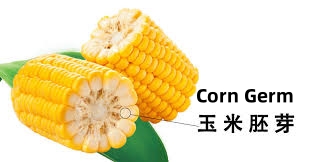How is corn germ produced? The process is revealed
The biggest use of corn germ is oil extraction.
Corn germ is rich in oleic acid and linoleic acid, which is beneficial for lowering serum cholesterol, anti-oxidation, and improving immunity. At the same time, it is also a treasure trove of fat-soluble vitamin E, lecithin and phytosterols. Corn germ has a full range of amino acids and a relatively balanced content. Corn germ also contains functional factors γ-aminobutyric acid and glutathione, which have significant effects in improving lipid metabolism, slowing down arteriosclerosis, and protecting the liver.
Now I will introduce to you how corn germ is extracted from corn.
↓
1.Cleaning corn: First, fresh corn kernels are sent to the cleaning equipment to remove surface dirt, impurities and residues.

2.Soaking: The washed corn kernels are soaked in water, which helps soften the corn kernels and makes subsequent processing easier.
↓
3.Shelling: The soaked corn kernels are processed by the shelling machine to remove the outer shell and expose the germ and endosperm inside.
↓
4.Separation: After shelling, the corn kernels are sent to the separation equipment to separate the germ, endosperm and other components to ensure effective extraction of the germ.
↓
5.Extraction: The corn germ can be extracted from the corn crushed using the corn germ separator
